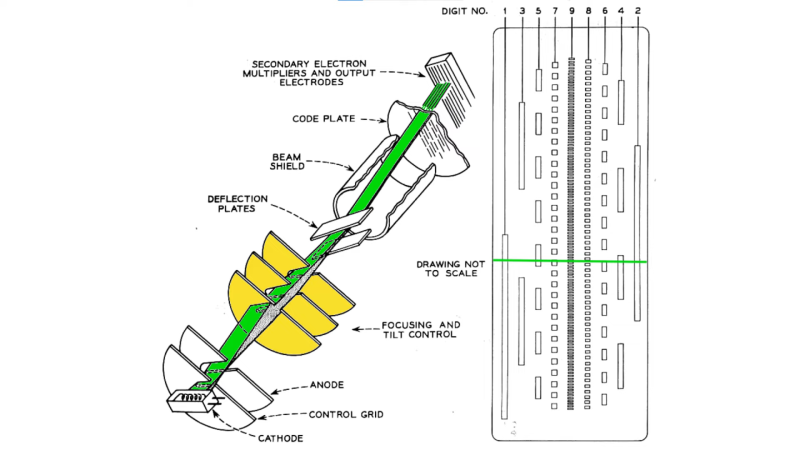Retrotechtacular: The Forgotten Vacuum Tube A/D Converters of 1965

In any era, the story of electronics has very much been about figuring out how to make something happen with what’s available at the time. And as is often the case, the most interesting developments come from occasions when needs exceed what’s available. That’s when real innovation takes place, even if circumstances conspire to keep the innovation from ever taking hold in the marketplace.
This gem of a video from the Antique Wireless Association has a perfect example of this: the long-lost analog-to-digital converter vacuum tube. Like almost every mid-20th-century innovation in electronics, this one traces its roots back to the Bell Laboratories, which was keenly interested in improving bandwidth on its massive network of copper lines and microwave links. As early as 1947, one Dr. Frank Gray, a physicist at Bell Labs, had been working on a vacuum tube that could directly convert an analog signal into a digital representation. His solution was a cathode ray tube similar to the CRT in an oscilloscope. A beam of electrons would shine down the length of the tube onto a shadow mask containing holes arranged in a “reflected binary code,” which would later be known as a Gray code. The analog signal to be digitized was applied to a pair of vertical deflector plates, which moved the beam into a position along the plate corresponding to the voltage. A pair of horizontal deflector plates would then scan the beam across the shadow mask; where electrons fell on a hole, they would pass through to an output plate to be registered as a bit to be set.
Fast forward twenty years, and Dr. Gray’s basic idea was leveraged to build a 224 Mb/s analog-to-digital converter that just wasn’t possible with the transistors of the day. The innovation with this tube was to parallelize the output — instead of a single electron beam being rastered across the shadow mask at the appropriate position, a ribbon of electrons fell on an entire 9-bit row before striking an array of output detectors.
As usual for Bell Labs, the tube performed excellently, nearly matching the theoretical signal-to-noise ratio. But alas, another project in the lab to build an all-solid-state ADC had gained traction while the tube was being perfected, and much of what drove both projects fell apart as AT&T concentrated on microwave guideline and optical fiber for their digital networking needs.
As innovative as the vacuum tube ADC was, it never appears to have seen use in any production networks. But it’s still a fantastic illustration of what’s possible under constrained conditions. We’d love to see one of these tubes, if any still exist, resurrected and put through its paces.
Thanks to [Mark Erdle] for the tip.
Post a Comment